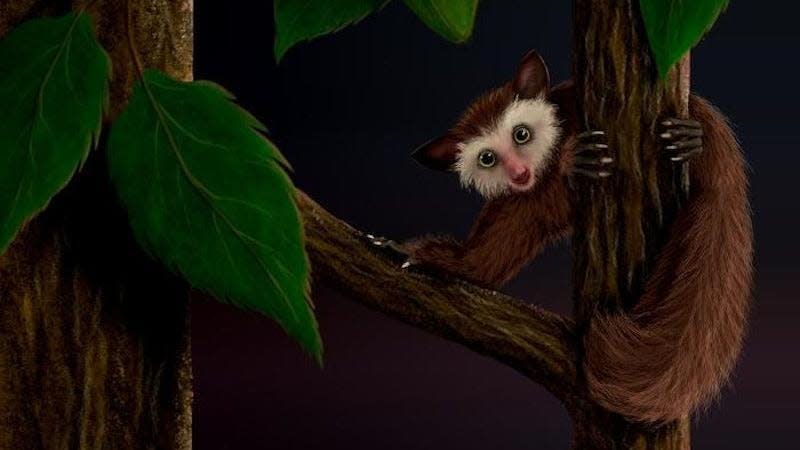Ancient 'Lazarus' Primate Was North America's Last—Until Humans Arrived, Researchers Say

An artist’s impression of Ekgmowechashala, an ancient North American primate.
You may think Nebraska and China have little in common, but the two places definitely share one ancient similarity: the presence of a 30-million-year-old primate lineage which headed to North America millions of years before modern human ancestors would evolve.
The lineage emerged in North America millions of years after the apparent extinction of all other known primates on the continent, making the taxon a “Lazarus” species—one that crops up after its presumed extinction. Modern Lazarus taxa include the New Guinea singing dog (rediscovered in the wild in 2018 after going unseen for 50 years) and the black-browed babbler, spotted in October 2020 after 170 years of being presumed extinct. Lazarus taxa are named for the biblical Lazarus, who was resurrected by Jesus in the New Testament.
Read more
The notion that Ekgmowechashala, a primate whose name comes from a Sioux word for “monkey” as reported by Science News, migrated to North America via a land bridge has been around for some time. In 2015, a different team comparing Ekgmowechashala remains from Oregon to fossils from South Dakota and Nebraska suggested that the animal came from Asia and only arrived in America during the Oligocene Epoch some 29 million years ago. But the recent research team was able to establish a close phylogenetic relationship (i.e. the evolutionary history and connections between species) between Ekgmowechashala and the Asian primate species Palaeohodites naduensis, confirming the North American Lazarus taxon’s origins.
The fossils of Palaeohodites naduensis—whose genus name comes from the Greek words for “ancient” and “wanderer”—were found in 1995 near the village of Quelin in southern China. In the new paper, the researchers compared P. naduensis’ teeth with those of Ekgmowechashala. Based on the remarkable similarities between their teeth and jaw bones, the team determined that the two animals are sister taxa, the closest relatives of one another in their phylogenetic tree.
“When we were working there, we had absolutely no idea that we would find an animal that was closely related to this bizarre primate from North America, but literally as soon as I picked up the jaw and saw it, I thought, ‘Wow, this is it,’” Beard said. “Here in KU’s collection, we have some critical fossils, including what is still by far the best upper molar of Ekgmowechashala known from North America. That upper molar is so distinctive and looks quite similar to the one from China that we found that it kind of seals the deal.”
The cooling and drying of North America that forced other primate species from the continent is very different from the warming world we inhabit today. But Ekgmowechashala’s story is a reminder that some life finds a way, even if many other forms of it do not.
More: 2.9-Million-Year-Old Artifacts Suggest Ancient, Big-Toothed Hominin Made Stone Tools
More from Gizmodo
Matthew Perry saved Friends by making the writers drop a storyline where Chandler cheated on Monica
Machine Gun Kelly Knows Exactly How To Deal With Martin Brundle
Virginia Governor Tells Voters to Just Trust Him That GOP Won’t Pass a Total Abortion Ban
Fossil Fuel-Funded Think Tank Claims Electricity Costs $17 Per Gallon
Sign up for Gizmodo's Newsletter. For the latest news, Facebook, Twitter and Instagram.

